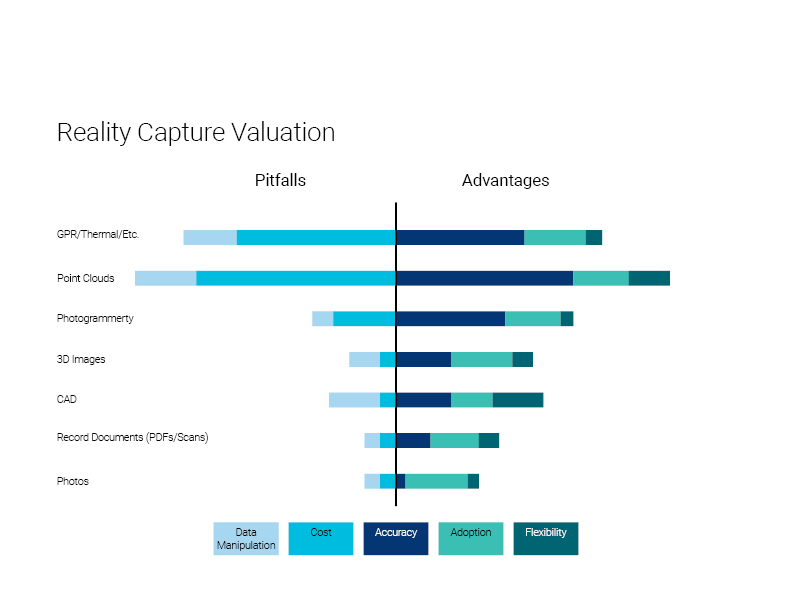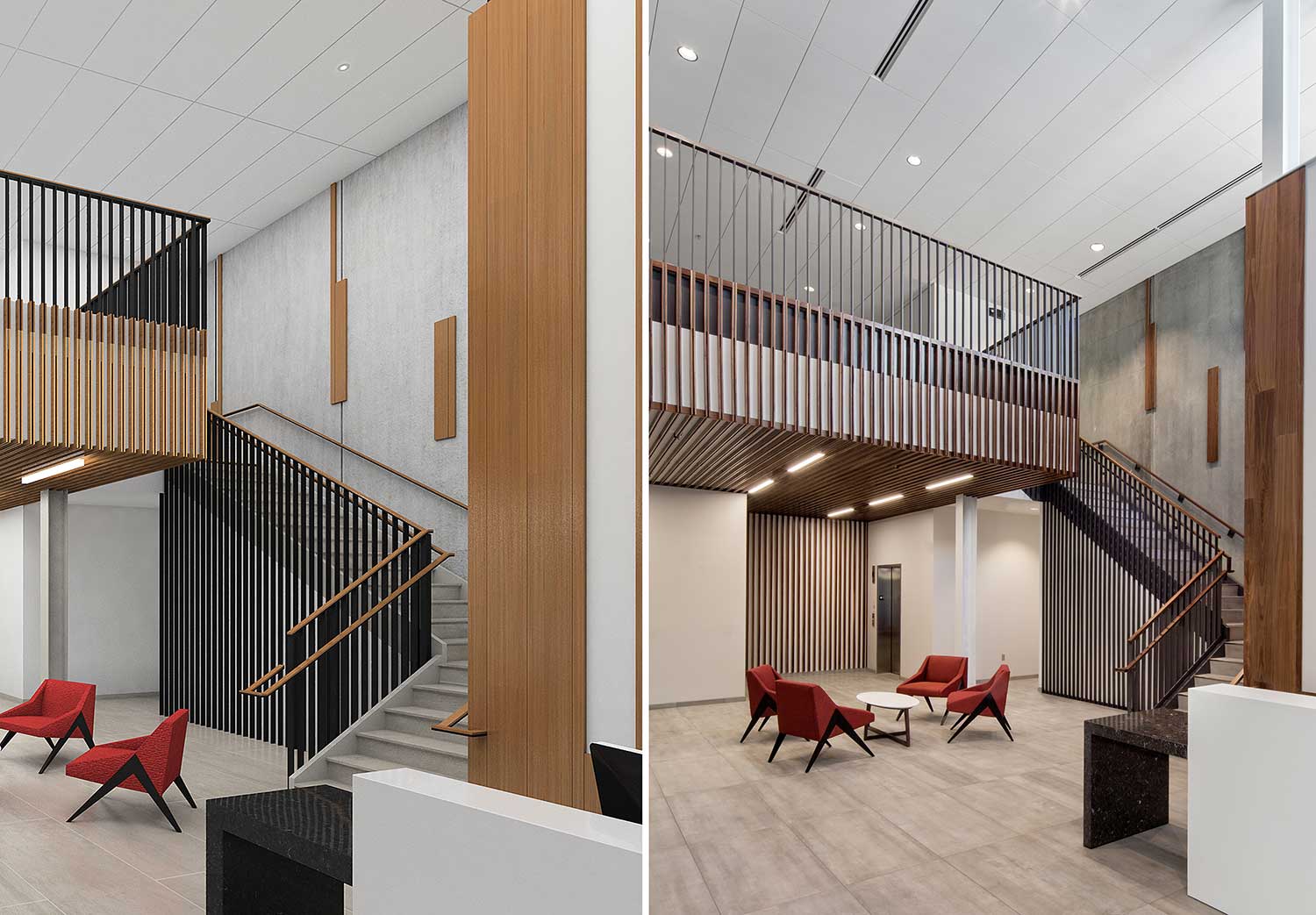The art of renovations
Digital Practice Manager
“Technology is just a tool. In terms of getting the kids working together and motivating them, the teacher is the most important.”
Bill Gates
Except that instead of kids, it’s the professionals who gain the most with a deep-seated technological toolbox education.
Thanks to the construction boom of the 1950s and 60s, there is a substantial group of buildings in need of renovation. Renovating buildings is not only necessary, but also provides economic benefits, a more sustainable approach and preserves our history. For me, the draw is simply that renovations present bigger and better design challenges.
As AEC professionals, we have a thorough understanding of a basic project timeline, from predesign through owner handoff and commissioning. The wrinkle in understanding our technological toolbox is that often we misalign our traditional scheduling structure with when tools may be most impactful. Renovations especially aid the ability to capture and visualize existing conditions early and thoroughly, but this remains a significant hurdle to schedule. Given the current skilled labor shortage and growing population, the only way to salvage embodied energies quickly is to grit our design teeth and dig into gaining an enhanced understanding of our renovation tools.
Visualization toolbox
At LEO A DALY we use a wide variety of reality capture and visualization tools in our toolbox. This aims to broaden the toolboxes of today and encourage artfully challenging our built environments through renovations.

Royal River Casino
Imagine a native American casino in the middle of the Midwestern plains in desperate need of revitalization, since its early 1990s conception. The need for dramatic modernization and thrilling intervention is key, but preserving the cultural heritage is vital to the region’s roots. From the beginning we were looking to salvage only the most culturally precious murals and to make drastic interventions within much of the remaining layout.
Upon completing the site investigation, it was clear the records lacked accuracy. However, with a drastic intervention approach, they were close enough to allow us to generate our building models. In a traditional manner, we started with the cleaning and importing of an as-built floor plan file from the original construction documents. From here we manually traced our building content, bringing our understanding of the space from 2D to 3D to design within.
To supplement the spotty accuracy of the file, we rigorously cross-referenced with site visit notes, measurements and meticulous photography. These “AutoCAD to Revit” and “photography to Revit” workflows are frequently called into action from our LEO A DALY renovations toolbox. Despite this workflow’s rigor, it is a very familiar starting place that offers quick adoption by the team, has inexpensive upfront costs and is very common. We took about 80 billable hours to model existing conditions from scratch in this manner (excluding site visit recording efforts).
As design progressed, we wanted to focus interaction with the owner on our ability to communicate effectively with strong visualizations, instead of relying on sophisticated construction jargon. We investigated our renovations toolbox to pull out some key visualization tools. We used photorealistic rendering tools (Revit, 3DS Max, Photoshop, Lumion) and virtual reality tools (Revit, Enscape, Unreal) to best communicate with the owner.
The effectiveness of these tools is best illustrated in how we addressed a question from one of the facility’s bartenders. The employee cited concerns over the reach ranges in our countertop and casework solutions. Of course, having seen Tom Cruise in the 1988 classic Cocktail, I had to try my hand (via HTC VIVE controller) in showing my bartending skills. Showing off the reach ranges and cabinet heights first-hand with the client is at its core the greatest value any virtual reality technology offers.

Once into construction, we got to tap our technology toolbox once more. The contracting team was capturing 3D photographs (Procore, Ricoh Theta tools) during construction. With our office a four-hour drive from the project, these 3D images were widely useful in judging construction progression and quality with greater frequency than our site visit schedule offered. This greatly aided the speed at which remote questions between the designer, builder and owner were resolved. As this continued throughout construction, it also proved very useful in remotely assessing quality between our virtual reality visualization design intent with the 3D photographs.
Then on a snowy night, the doors opened and crowds shuffled in to immerse themselves in the vastly altered spaces. With the strategic aid of our tools, we highlighted the industrious space transformations, dramatic nature-forward finishes and animated lighting. The renovation process was wildly successful, but the real take away was the value that these strategies and tools, including rigorous site analyses, 3D photography and virtual reality, added to our process. They allowed us to iterate and present highly accurate representations of space. This value extended far beyond a traditional design process but drove effective design narration throughout construction and opening day.
Historic Fort Snelling
The Minnesota Historical Society is embarking on a major initiative to reintroduce this dramatic National Historic Site to Minnesotans and history lovers worldwide. Our design includes the renovation of a 120-year-old masonry barracks building that prioritizes preservation, cultural significance and adaptive reuse of program.
With historic preservation projects, the unknowns are vast, the risks are high and public interest is significant. Historic Fort Snelling presented a number of challenges that we needed to negotiate successfully before design could truly begin. The first key step was to gather and catalog as much information as possible.
Being a 100+-year-old series of structures that include at least two additions and three major interior renovations, the existing conditions record keeping was minimal. Because of the historic significance of this site, we recommended gathering as much accurate and current information as possible via high-quality laser scan of the facility and grounds. Though laser scanning can host a range of accuracies and costs, we took a “Cadillac approach,” contracting for many high-quality scans to achieve a sub-two-millimeter level of accuracy.
To do this we mapped and commissioned over 380 scans of the structure inside and out. The process of scanning took two professional surveyors about four days to accomplish. Once captured, another three weeks of point data manipulation (ReCap Pro point decluttering/desampling) and tracing (Leica Cyclone, Revit) brought us to our Revit and Navisworks starting points. Once here, we were able to cross reference model data and make judgments on building system qualities.

Another key complexity of the Historic Fort Snelling project lay in the abundance of stakeholders needing empathetic design considerations. To address this need, we focused on a visualization forward approach. This allowed us to prioritize our efforts with virtual reality walk-through tools and rendering handouts for communicating design intent. Having an abundance of stakeholder backgrounds in our audiences drove the reliance on tools like virtual reality to both communicate existing conditions in need of remediation and strategic recommendations of interventions.
What’s next?
We’re seeing and pursuing workflows that improve the directness of connectivity between the tools in our toolbox. For example, most recently on the market we’ve begun to see tools that allow for direct virtual reality viewing of point clouds. The idea and demand have been around for a little while, but there are currently only a few very tedious workflows to accomplish this.
We’re pursuing products that prioritize ease of use and will make adoption much more realistic. We’re exploring tools that start to engage with the ability to edit models in augmented and virtual reality spaces (in lieu of just visualization and review tools popularized today). Lastly, we’re starting to see delivery methods that are beginning to rely on the use of scanning data natively with iterations layered above them. Tools like this could be used in underlaying cloud data views, annotating the point data of intersection and then overlaying with the intervention, which would provide much clearer before/after graphics early in the design process. Currently this is a useful means of communication but is painstaking to create iteratively.
Renovations offer unique and complex challenges that demand a strong toolbox to thrive. I hope this article helps illuminate some of the technological tools called into action today and encourages the broadening of renovations approach. Like any good artist, mastering of technique through practice demands the willingness to challenge the world’s toolbox and explore your own. Restoring our worldly conviction to renovations through exploration of techniques, tools and values offers us the opportunity to reinvigorate our community’s significance. I implore each of you to continue broadening your knowledge, filling your toolboxes and artfully challenging the quality of our environments.

Ron Brinkman loves the craft of design and focuses on using empathy to integrate project stories and client narratives into everything he does. With a background in building and construction, he leverages digital and physical design tools to bridge the design and construction processes. Ron manages the Minneapolis studio’s digital practice and provides value by challenging current tools and methods to innovate with new solutions that benefit our clients and communities.
